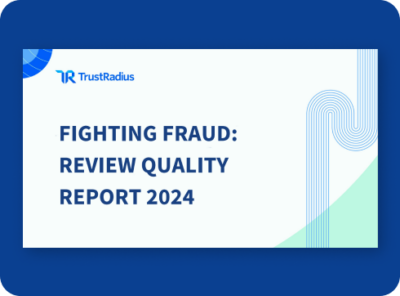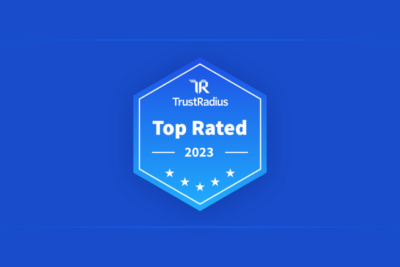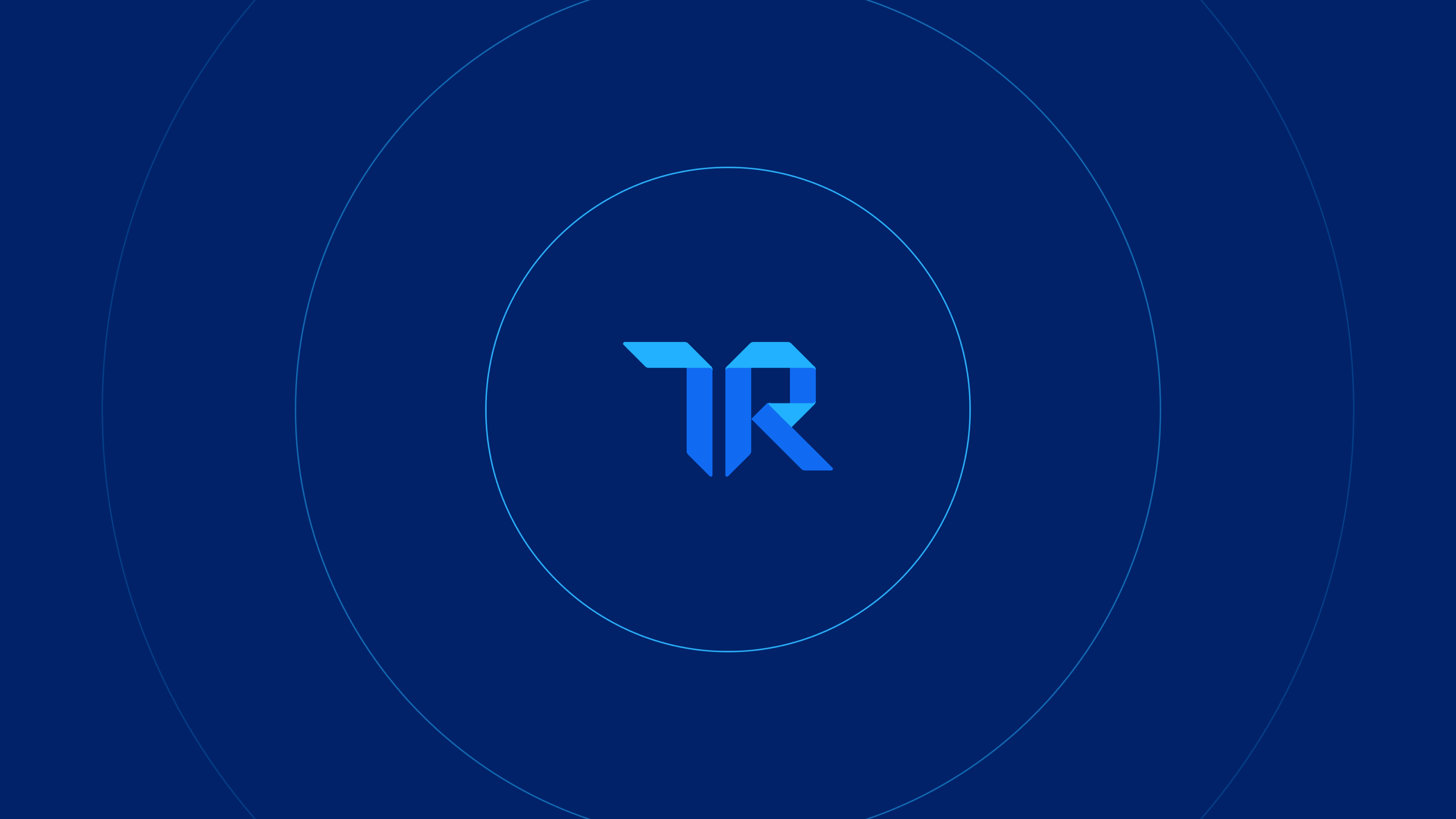5 Ways to Build Long-Lasting Connections with B2B Technology Buyers
ICYMI – Engaging B2B Buyers on Their Terms with LinkedIn’s B2B Institute
Understanding the B2B buyer is an ongoing process. As their preferences continuously shift, technology brands are struggling to adapt and stay relevant.
In our LinkedIn Live: Engaging B2B Buyers on Their Terms, Megan Headley, TrustRadius VP of Research, sat down with Kate Newstead, Marketing Science Lead at The B2B Institute, a LinkedIn-sponsored think tank, to discover what it takes to build a B2B technology brand that shines in our new reality.
Understanding today’s technology buyers
The influx of large investments in technology helps businesses of all shapes and sizes prepare for growth but buyers are still navigating budgets and volatile outlooks, which makes them more skeptical than ever. The B2B Institute’s research and TrustRadius’ B2B Disconnect Report both reveal that technology buyers want a self-serve journey, meaning they want to find the information needed to make a decision without speaking to a representative or engaging with a brand.
In this fast-paced industry, it’s important to understand the types of information buyers want and where they seek to find it in order to connect and engage with them on a deeper level. Once you understand your buyers behavior trends, it’s time to work with your internal stakeholders and build campaigns that drive success long into the future.
How to breakthrough the mold and win over B2B technology buyers
Meet the technology buyers on their level.
In B2B, companies need to know their customers on a personal level. You must understand where and how they’re looking for products. In today’s digital age, buyers have more information at their fingertips than they’ve ever had, but at the end of the day, they are still humans.
“We have all these limitations in our brains about how much information we can handle and how many decisions or brands we can consider. The competition for attention has never been more fierce but the ability to sort of step away from it, switch off and dial out on the buyer’s side remains a real power they have. Meeting buyers where they are and giving them the right kind of information simply is really important,” said Newstead.
One way to discover how buyers are finding products in your category is by tapping into downstream intent data. B2B buyer intent data is a collected set of data points that indicate that someone may be interested in buying your product. Websites collect intent signals from users—including the pages they visit, the links they click, and the resources they download—and synthesize that data to share with marketers and salespeople.
TrustRadius, for example, can dynamically provide you with a list of companies who have researched your products, a list of companies who checked out your competitors’ products, or even people who are researching your category as a whole. All of these buyer intent signals indicate which companies are likely to make a technology purchase in the near future.

Think differently about differentiation.
Marketers can fall into the trap of assuming that differentiation means, “I have to have a very specific offer that is tangibly functionally different to what my competitors do and that’s the only way to win business.” If your product is first-to-market and has a clear difference than the rest, that’s one way to look at your approach, said Newstead. But over time, other players will enter the market and you will have to adjust your strategy.
“What does stay the same is a big opportunity for B2B marketers to zoom out, maybe even away from the product and all the nitty-gritty and think about the brand. What makes the brand memorable? That’s something that you can bank on and invest year after year after year. That investment will accumulate and really add up,” she added.
At the product level, the differentiation piece is more risky and it’s unlikely for lots of brands to have a sustainable competitive advantage in the long run, she added.
Invest in big picture brand marketing campaigns
Newstead explained that some of the most successful marketing efforts observed by LinkedIn and the B2B Institute are the ones that focus on the bigger brand story and leverage data from prior campaigns to see what’s working and what’s not.
“I think there’s a big opportunity to look beyond converting the bottom of funnel and zoom out and think more broadly about big brand advertising. About building the memories and awareness,” she said.
It’s a long-term burn, so don’t expect to switch gears on your marketing efforts and get 10 extra phone calls to your sales team, she added.
Shifting from bottom-of-the-funnel to big brand campaigns will require buy-in from your CFO. Newstead said that developing trust and having the conversation with them about the long-term benefits is a critical piece to making these efforts a success.
Get buy-in from finance even in a downturn, or bad economy. Consistent marketing efforts that hit on your brand differentiation is key. It will build loyalty over time and convert buyers. In most categories, they have 10, 20, sometimes more products to choose from but they are going to have their top three in mind to consider. You want to be one of those top brands because they will not take the time to look at all of them. By focusing on your brand story, what really makes you stand out aside from just the product, you can start to build loyalty and convert more buyers over the long haul.
Build collaborative connections between sales and marketing teams
Sales teams are feeling the heat with economic uncertainties, so shifting marketing to bigger brand awareness campaigns may be a tough sell in their eyes.
“Marketing investments touch a number of different stakeholders and those stakeholders may or may not be the people that are actually in the decision-making process. There’s a lot of complexity in the stakeholder mapping and management between sales and marketing. As a result, there’s a huge opportunity for marketing and sales to work together because we all work for the same objective. We just have different levers that we can use to help affect that goal,” said Newstead.
Sales teams typically have more of a one-on-one relationship with your customers and interpersonal skills that can help provide insight to marketing teams on the right messaging to connect. Build strong connections between sales and marketing teams internally so you can build consistent messages that will convert. Going beyond the bottom of the funnel, quick-grab efforts will pay off in dividends—it just takes a little more time.
Influence buyers through their emotions, not facts
Your buyers are humans and the human brain is emotional and unpredictable. The real challenge for marketing is to influence people with emotional messages rather than functional, rational specifics that might go over their heads.
“Our research shows that as a result of the explosion of the availability of information, buyers want to self-serve most or all of their journey. They don’t want sales to be the gatekeeper of pricing information, demos, use cases or ROI. Buyers want to find that information on their own so they can narrow down who they actually want to talk to. That changes the role of sales which is no longer the gatekeeper of information but really the consultative partner with the buyer in terms of helping them make sense of all of that information and tie it together,” said Headley.
Brand campaigns, as mentioned earlier in this post, help to drive home the message about why you’re the best company to partner with—not what makes your product the best. Make yourself the ideal partner with solutions that help them win. Show them how you can make their lives easier, don’t give them a list of features that cause their eyes to glaze over.
For more insight on how to meet the B2B buyer on their level, head over to the B2B Institute and check out their reports. Also, stay tuned for our 2023 B2B Buyer Disconnect report for the latest trends and behaviors that will drive your GTM strategies.
I’m a B2B marketer, what are the next steps?
The first thing you can do if you haven’t already is claim your free profile on TrustRadius.com.
Once your product receives just five reviews, you’ll get 50% more category visibility and you’ll be in the running for winning technology awards based on recency, relevancy, and rankings of your reviews.
When you create a premium profile, you’ll be able to:
- Get in front of over one million buyers
- Build your product profile
- Add screenshots
- Add video
- Add integrations
- Add pricing
- Let us drive reviews for you
- Shape the narrative with custom questions
- Drive conversion by syndicating content
- Boost SEO to landing pages
- Use downstream intent data
- Take advantage of our customer quote and reference library
- Use product and positioning insights
- Access Salesforce intent integration
- Utilize the Chrome Quote Finder extension
Schedule a demo to learn more.















